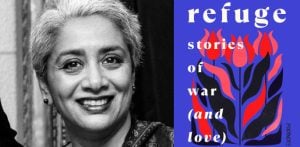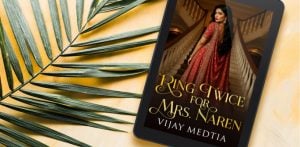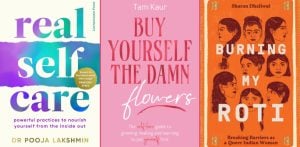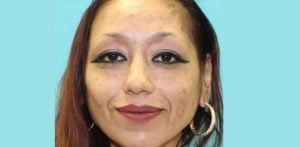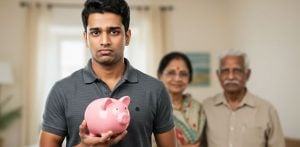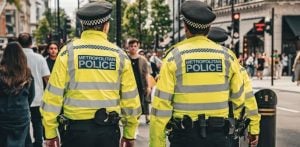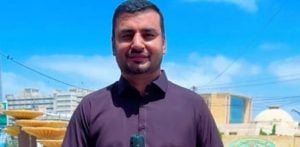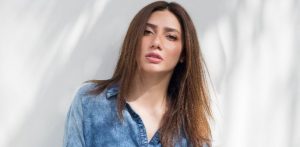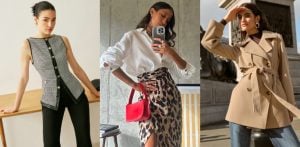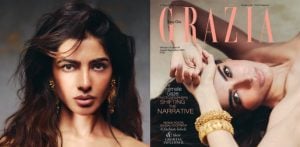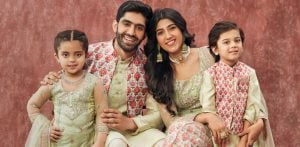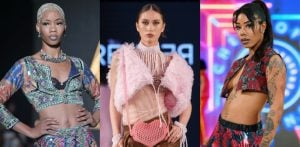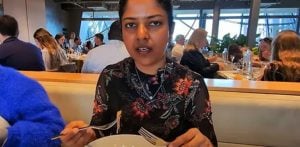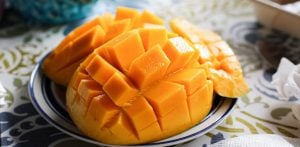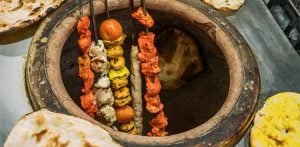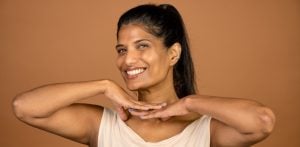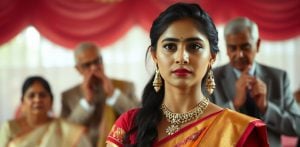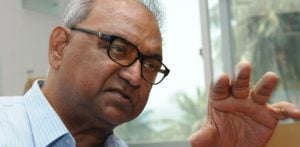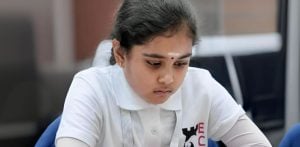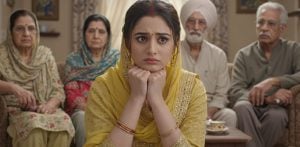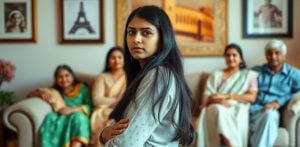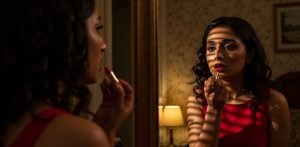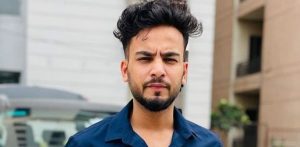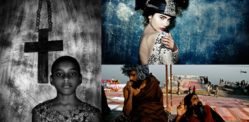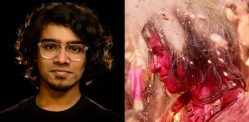"We need to be represented more in front of the camera"
British Asian photographers are mostly associated with stereotypical avenues such as parties and weddings.
However, with the influx of British Asian creatives, the focus on identity has become relevant. This is where photography is beginning to shine.
Besides, these photographers capturing beautiful images, their ability to grasp the contrasting backgrounds of British Asians is fascinating.
Even more thrilling is that within the British Asian identity lies distinctive experiences, values and upbringings, all unique in their own way.
So, the fact that these photographers have put on exhibitions to showcase this is befitting for wider audiences to understand Desi culture.
Additionally, it makes way for more representation within the artistic landscape.
DESIblitz presents the 5 best British Asian photographers who are wonderfully capturing the essence of cultural identities.
Kiran Gidda
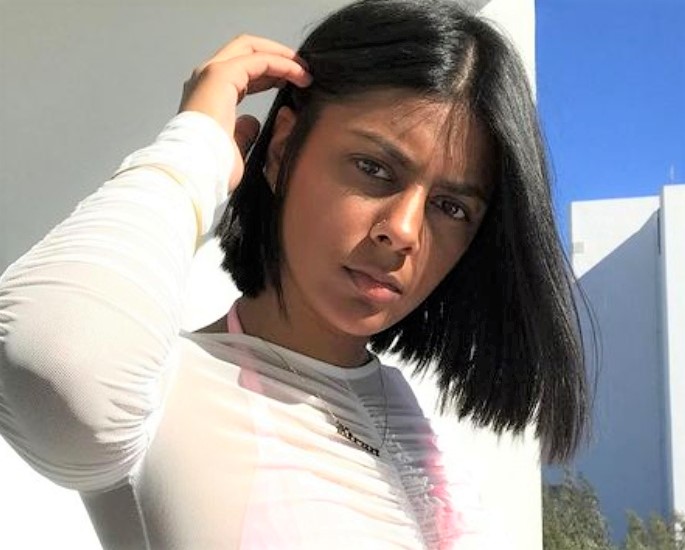
British Asian photographer, Kiran Gidda, was born and raised in West London. She is a trailblazer within artistic industries.
Like many South Asian creatives, Kiran was met with reluctance from her parents when she expressed her passion for photography.
However, what started as a hobby slowly led to an awe-inspiring collection of dazzling portraits.
Making use of tremendous lighting, Kiran’s grasp on colours and vibrancy is impressive, given the grey cloudiness of London.
Regardless, it is this vision that catapulted Kiran’s portfolios. The way she portrays raw emotion in her photography is thrilling.
Taking photographs of iconic British Asians such as influencer Simran Randhawa and supermodel Neelam Gill is the type of representation communities have waited to see.
Though, it was Kiran’s collaboration with visual artist Manvz that illustrated her experiences of the British Asian identity.
Under the alias ‘Em-Kay’, the duo created an art show in 2017.
It highlighted the struggle of South Asian elders in adapting to a modern British lifestyle.
They achieved this most artistically, as they explained on Manvz’s website:
“We styled our mums in clothes that we’d wear whilst catering to their levels of comfort, incorporating Indian culture using traditional jewellery and accessories.
“After years of telling us ‘I wish I could pull that off, but it would never suit me’, we took it upon ourselves to prove to them they can.”
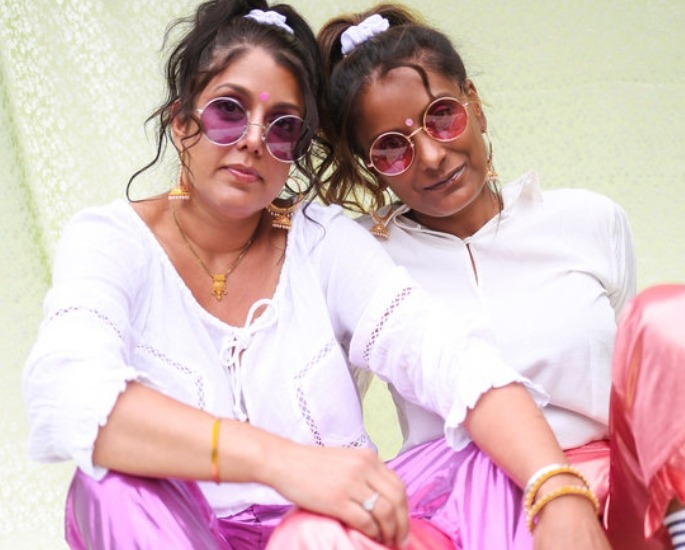
This exhibition illustrated how two cultures can seamlessly fuse but also the hardships British Asians go through.
Most South Asian families are concerned with holding onto traditional values. They also don’t want their children raised in the UK to lose sight of that.
This is familiar territory for most British Asians.
However, this art show displayed why both cultures don’t need to clash, but rather appreciate each other.
Dressed in contemporary British clothing accompanied by Desi accessories is a visionary tale of the British Asian identity. It also shows onlookers to not be afraid of either culture.
Having also been a part of Burnt Roti’s ‘The Beauty of being British Asian’ exhibition in 2017, Kiran’s formidable work is a focal point in identity.
Having gained worldwide recognition, Kiran has gone on to work alongside monumental companies like Billboard and Nylon.
The photographer has also shot popular music artists like Ella Mai and Yxng Bane, which emphasise the star’s artistic perception.
Sanah Khan
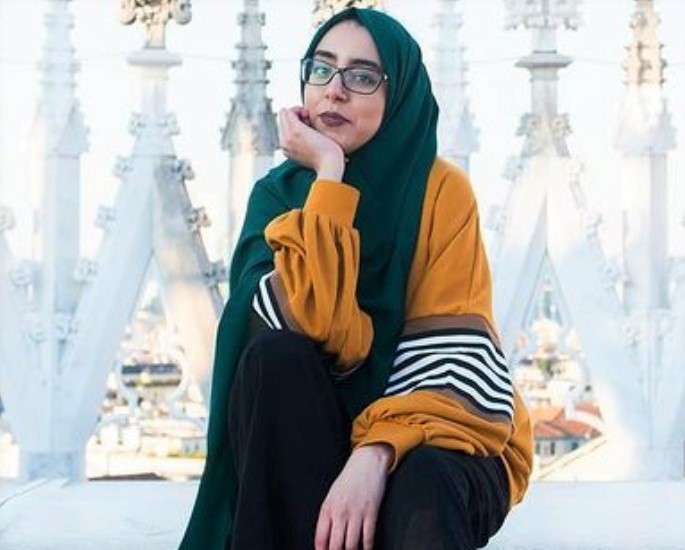
British Pakistani, Sanah Khan is a fairly fresh face amongst British Asian photography.
However, her artwork oozes with this elegant, inquisitive and distinguished flair that grabs your attention immediately.
Sanah’s work is incredibly evocative and intriguing.
Although, it was a university project looking into the colonisation of Bangladesh’s factory business, which solidified her cultural prowess.
Her images are motivated by the rich elements of South Asian communities, exploring this in a way that breaks down stereotypical viewpoints.
For example, her 2014 trip to Pakistan highlighted the serenity of the people, environment and values of the community.
Titled ‘3,747 Miles’, the series of photographs showed a more peaceful side of Pakistan and the innocence she captured in some portraits were fascinating.
A standout picture was of Sanah’s aunt. Gazing right into the lens, her aunt’s eyes are intense. Her slight smirk is humorous and the traditional salwar adds a colourful contrast.
All of these elements combine for an innovative definition of South Asian identity and values.
This showcase of community and culture is something that spreads across all of Sanah’s collections.
This was especially seen in Sanah’s ‘Pakistani for mains, British for sides’ collection.
The unusual yet original series focused on typical Pakistani cuisines such as samosas and tandoori chicken.
However, this was contrasted by someone adding a more western condiment to the dish. The most outlandish photograph was a person spreading Nutella across a roti.
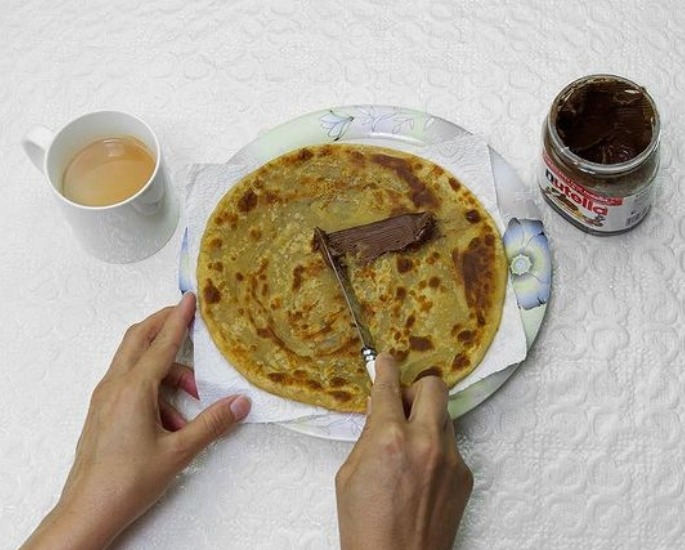
Although quite comical, the image did extremely well in personifying British Asians’ confusion in balancing their identity.
The photographs questioned a lot of ideals. The focal point of food symbolised the culture as a whole and personified the thoughts of South Asian families.
Such as ‘will our kids be able to teach their kids how to cook Desi dishes’ and ‘do the kids know the importance of learning about their backgrounds and so forth.
This imaginative concept appealed to numerous people who witnessed these authentic pieces.
However, the series also gave wider audiences an insight into how stabilising British and South Asian cultures can be complicated.
Sanah’s pride in her culture undoubtedly shines throughout all of her work.
In 2020, Sanah collaborated with designer Saeedah Haque on her project ‘Abaya with Kicks’.
The British Asian photographer snapped models in traditional modest wear. The model had worn trainers instead of typical heels or shoes.
It highlighted how British Asians don’t need to be afraid of tweaking South Asian ideals.
As mentioned before, both can work together. Putting a spin on traditional Desi attire does not mean one is challenging it, but rather reimagining the narrative.
There is no uncertainty that Sanah will continue to shine a light on South Asia and British Asian identity in the most alluring way.
Hark1karan

Photographer and curator Hark1karan is a household name amongst British Asian photographers.
From South London, Hark1karan has been paving the way since his self-proclaimed dedication to photography in 2014.
He describes himself as a “community photographer”, specifically focusing on his Punjabi and Sikh heritage.
Harkaran is not just an artist who wants to document singular aspects of South Asian culture.
He wants to provide audiences with a nuanced narrative of what Desi culture is about and how individuals navigate through them.
Aesthetically, the British Asian photographer’s snaps are honest, symbolic and candid.
His images are emotive and feature a range of elements that tell a story. This can be about culture, politics or identity.
Although Hark1karan broke through the artistic landscape with his fabulous portraits, it was his series, PIND: Portrait of a Village in Rural Punjab (2020) that really cemented his creativity.
The project spreads across three visits to the Bir Kalan village in Punjab, India.
In 2021, Hark1Karan told the publication, It’s Nice That, about what the images represent:
“These photographs act as historical documents, giving the people of the village both a voice and face.”
Going on to explain the intimacy behind the photos, Hark1karan states:
“They capture a liminal moment in time of the changing landscape and culture of rural Punjab.”
This emphasises how intuned Hark1karan is with his culture, providing a unique insight into what makes South Asia so grand.
It’s the raw, gripping and authenticity behind each image that explains how Hark1karan is honed in on representing his heritage truthfully.
This personal relationship that the photographer has with the subjects is what makes his portfolio so thrilling, especially when he focuses on the British Asian identity element.
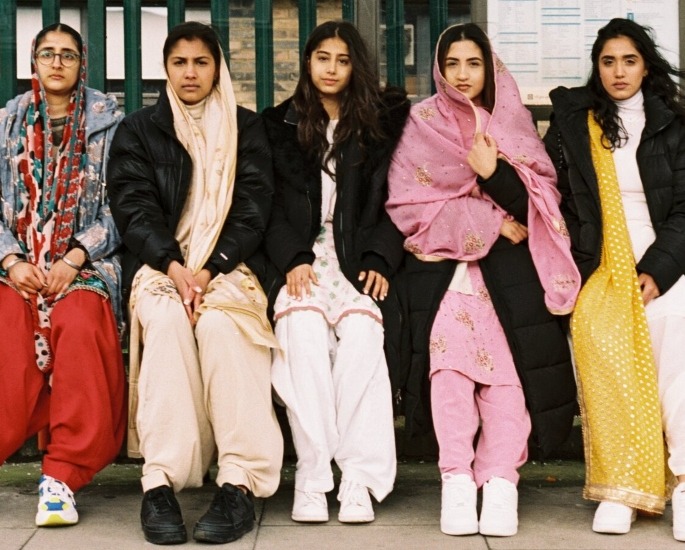
His project ‘Day Out With The Girls’ was evocative of this. Following a group of young Punjabi women, the series highlights how western and Punjabi cultures mix within Britain.
The photographs explore the notion of friendship, heritage and multi-layered experiences.
The imagery of the girls in suits with trainers is completely reminiscent of how South Asian elders historically dressed when migrating to Britain.
Describing why this is important to him and It’s Nice That, Harkaran reveals:
“The series subtly considers a number of questions often explored by a generation who are growing up with multi-layered experiences.
“Am I British enough? Am I Punjabi enough, am I an outsider? How can I practice my faith? Do I have to pick one culture over the other?”
It is these queries, which many British Asians can relate to. The fact that Hark1karan can capture these ideologies makes it even more astounding.
This unapologetic approach makes Harkaran’s photography a transparent method of challenging your own identity.
His pieces have a celebratory theme that takes the fear out of embracing both British and South Asian cultures.
Dejah Naya McCombe

Dejah Naya McCombe is an empowering photographer from London who focuses on representing women of colour.
Her mixed British and Indian heritage has given Dejah the experience of what it’s like to integrate into different cultures successfully.
Having only followed her passion for photography in 2016, the young starlet is already gaining massive notoriety for her innovation.
However, to emphasise the portrayal of British Asian culture within her images, Dejah uses fashion as the focal point.
The artist solely believes that people and companies overlook the beauty within South Asian women and fashion.
She also maintains that when it is appreciated, it is done so in a fetishised manner.
Speaking to Refinery 29 in 2017 regarding this, Dejah explained:
“There are millions of people living in the UK with South Asian backgrounds so why is it when I open magazines, I don’t see any of them?”
“We need to be represented more in front of the camera as well as behind the scenes.”
Additionally, she hopes that her images question the ideologies around white superiority and racism.
In 2017, the photographer released the series ‘Punjabi Skinhead’. This was motivated by her upbringing where neo-Nazi’s were common.
Dejah took this as an inspiration to create a collection that challenged the discrimination she endured.

Skinheads are historically known to abuse people of colour, especially British Asians.
Therefore, as Dejah photographed a Punjabi woman with a skinhead, she stripped away the connotation of racial superiority.
The model’s sweet yet powerful glare is intense. The intimacy and strength oozing out of her are unparalleled in representing the strength of South Asian women.
This shows how Dejah is providing a truly original insight into identity and how there is no definition of what a British Asian person should look like.
Her other projects like ‘Seventeen’ and ‘Simisear’ allows audiences to get a grasp of how integrated South Asian women are within British culture.
Not only is this giving younger British Asian women a voice but it emphasises how underrepresented these industries are.
Her images challenge the hurdles faced by British Asian women and how their identity is constantly questioned.
However, the turning point within her photographs is the rawness, which the individuals exude.
This transparency is a celebration of Desi culture but also how Britishness should be inclusive of everyone.
With over 4000 followers on Instagram, Dejah is continuing her exceptional growth as a photographer.
Having worked with British Asian personalities, as well as companies like Vogue and Estee Lauder, Dejah’s trailblazing work is continuing to break down barriers.
Maryam Wahid

Similar to Dejah Naya McCombe, Maryam Wahid is a British Asian photographer exploring the identity of Pakistani Muslim women.
Born in 1995 and from Birmingham, Maryam’s images are semi-autobiographical that explore her identity as a British Asian woman.
Her fascination with the South Asian community within Britain and the notion of belonging are prevalent themes in her work.
Having only taken up photography in 2018, her images are extremely mature and distinct in their portrayal of her heritage.
Interestingly, it was Maryam’s personal family albums and history that really influenced her collections.
Speaking to Autograph in 2020, she highlighted why this foundation was fundamental to her:
“Photographs allowed me to immediately connect with the individuals and places that were part of my history.”
“Reflecting on my grandfather’s journey to the UK, I feel it is so important to collect these narratives to create cultural understanding between various communities in Britain.”
Specifically focusing on the migration patterns that her family endured, Maryam is evocative in the story her photos tell.
For example, her 2018 series titled ‘Archives Locating Home’ portrays intriguing photos of Maryam’s family.
Some individuals within the images also have their eyes blurred out with green paint.
The photos symbolise the time and effect of a post-empire surrounding. They present a rich view of what family’s like Maryam’s experienced during their first moments in Britain.
Additionally, the tonal greens she uses in the photographs represent the colour of Pakistan, the themes of family and hope tied to it.
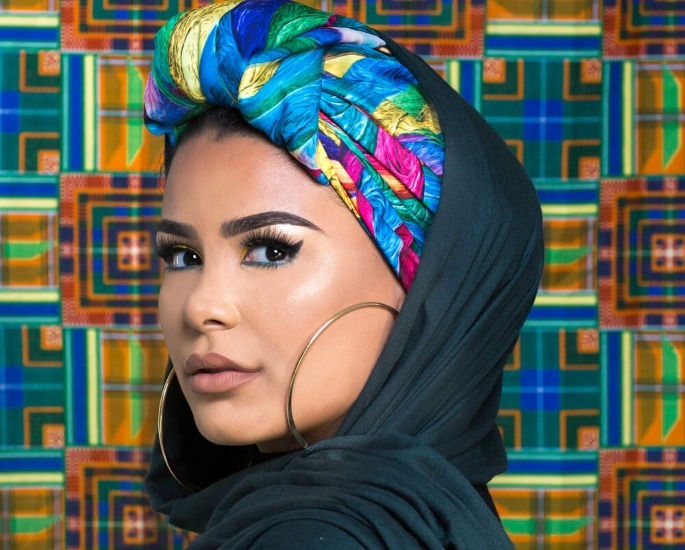
Colour is a major part of Maryam’s work, which was everpresent in her series ‘The Hijab’.
Snapping different women in the hijab, Maryam wanted to capture the diversity of women in this piece of clothing.
She wanted to remind audiences of why the hijab is so important. But also that it represents a substantial amount of history about the Pakistani community.
This is why Maryam is so formidable in her approach to photography.
Her collections aim to shine a light on why British Pakistani communities are so vital to the identity of Britain.
However, she also wants her collections to question the idea of woman’s independence.
Admittedly, Maryam is aware that independence wasn’t afforded to older generations in the same way it is to her.
By using different locations, fashion, cultural poses, and enriching colours, Maryam is hoping her work highlights the integrity of British Asian women.
Well aware of the traditions passed down from generation to generation, Maryam knows the complexity of British Asian identity needs further exploration.
The inspiring nature of Maryam and her work is so moving.
Analysing facial expressions, clothing and the surroundings of her personal albums has taken Maryam on a journey of self-realisation.
This is the journey that she wants other young British Asian women to go on, whether that’s through their own photographs or hers.
Photography’s Exciting Future
These British Asian photographers are monumental in redefining the photography landscape.
Their approach towards their work is not just artistic, but a refreshing explanation of British Asian identity.
Using numerous techniques and exploring contrasting heritages, these photographers narrate and challenge misconceptions surrounding South Asians.
However, they also emphasise the need for diversity within the industry. The importance of this is unparalleled.
This helps future generations in understanding their history and gives wider audiences an insight into unfamiliar cultures.
These British Asian photographers are deserving of their recognition as they continue to innovate for a more creative future.


